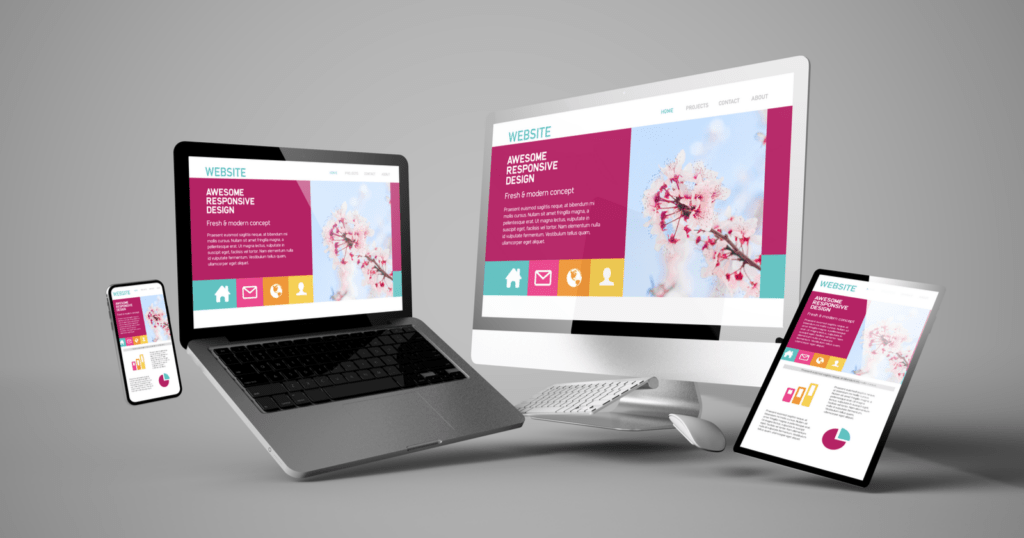Professional Website Design for Businesses Looking to Boost Sales
Professional Website Design for Businesses Looking to Boost Sales
Blog Article
Top Tips for Producing an Impactful Internet Site Layout That Converts
To achieve this, one need to think about a selection of elements, including comprehending the target audience, prioritizing user experience, and optimizing for mobile systems. The calculated use of compelling call-to-actions and a well-defined visual pecking order plays an important duty in leading individuals with their journey.

Understand Your Target Market
Comprehending your target audience is basic to effective internet site design, as it prepares for producing an appealing individual experience. Recognizing who your customers are, including their demographics, choices, and actions, allows developers to customize the web site's material, format, and capability to satisfy certain demands.
Conducting detailed market research study is crucial in this process. Studies, interviews, and analytics can offer valuable insights right into customer expectations and pain points. By assembling this information, developers can create customer characters that stand for different segments of the audience, guaranteeing that style choices are notified and appropriate.
Furthermore, comprehending the target audience helps in picking suitable style components such as color pattern, typography, and images that reverberate with users. A website that speaks straight to its target market fosters a feeling of link and count on, motivating longer sees and higher conversion prices.
Ultimately, a user-centered approach to web site layout not just improves user satisfaction however likewise supports company objectives by driving involvement and loyalty. By prioritizing the needs and preferences of the target market, a web site can efficiently offer its purpose and attain preferred end results.
Prioritize Customer Experience
To boost the overall performance of an internet site, focusing on customer experience (UX) is essential (Website Design). A properly designed UX makes certain that visitors can browse the site effortlessly, discover details promptly, and involve with material meaningfully. This results in boosted individual satisfaction and higher conversion rates
Begin by implementing instinctive navigating. Menus needs to be practically structured, permitting customers to situate vital areas of the website with marginal initiative. Consistency in style components, such as color design and font styles, promotes experience, which is important for maintaining user interaction.
Furthermore, consider the loading speed of your internet site. A hold-up of just a couple of seconds can bring about considerable drop-offs, as users are much less most likely to wait for a slow-loading web page. Simplifying images and optimizing code can boost efficiency and preserve visitors.
Furthermore, clearness in content discussion is crucial. Use succinct, appealing language and damage up text with visuals to enhance readability. By focusing on customer experience, you not only produce a more satisfying setting for site visitors yet additionally strengthen your brand name's credibility. Eventually, a concentrate on UX is a financial investment in the long-term success of your site.
Enhance for Mobile Instruments
Enhancing for mobile phones is vital in today's digital landscape, where an enhancing number of individuals gain access to websites with mobile phones and tablets. A mobile-friendly design not just boosts customer experience but also plays a significant duty in improving internet search engine positions. To achieve this, it is vital to take on a receptive design that instantly adapts to numerous screen sizes and positionings.

Loading speed is one more essential variable; mobile individuals are normally less person and anticipate quick accessibility to info. Maximize images and take advantage of web browser caching to improve efficiency. Examination your web site on multiple gadgets and display resolutions to identify and fix any kind of potential functionality problems. By focusing on mobile optimization, you guarantee that your internet site stays competitive check this and effectively engages a more comprehensive audience.
Usage Engaging Call-to-Actions
A website's performance frequently pivots on its ability to direct site visitors towards desired actions, making compelling call-to-actions (CTAs) crucial parts of style. CTAs act as the critical factors that guide individuals to engage with the website, whether that indicates purchasing, signing up for a newsletter, or downloading a source.
To develop efficient CTAs, clearness is extremely important. Usage concise language that clearly communicates the activity you desire the customer to take. Expressions such as "Obtain Started," "Join Free," or "Shop Now" not only communicate seriousness yet also eliminate ambiguity. The positioning of CTAs is just as vital; they should be strategically placed throughout the check this webpage to ensure they are conveniently noticeable, specifically in high-traffic locations.
Moreover, the layout of CTAs ought to stand out without being noticeable. Employ contrasting colors and clear font styles to guarantee they catch attention. Furthermore, consider making use of directional hints, such as arrows or images, to guide customers toward these switches. By concentrating on these components, organizations can considerably enhance customer interaction, driving conversions and ultimately accomplishing their website's goals.
Emphasis on Visual Power Structure
Reliable web site layout depends heavily on a well-structured visual hierarchy that overviews customers via content flawlessly. By arranging components in a fashion that focuses on info, developers can boost user experience and help with decision-making. This entails making use of size, shade, comparison, and spacing purposefully to accentuate the most important components of a website.
Making use of larger fonts for headings and subheadings establishes a clear distinction between different sections, allowing customers to check content effortlessly. Additionally, employing different colors for buttons and calls-to-action can capture individual interest and urge communication. Whitespace is another vital element; it prevents mess and allows customers to concentrate on vital messages without disturbances.
Pictures and graphics ought to complement the message while also adhering to the established power structure, strengthening the overall message (Website Design). Uniformity in design elements, such as color design and typography, additional reinforces the visual hierarchy, making navigating intuitive

Conclusion
In conclusion, efficient site style requires a comprehensive understanding of the target audience, prioritization of customer experience, and mobile optimization. Eventually, a well-executed website design serves as an essential component in driving customer actions and accomplishing service objectives.
Report this page